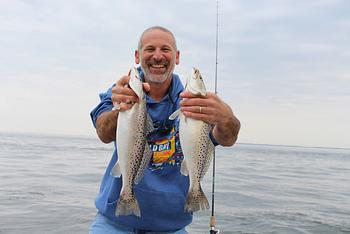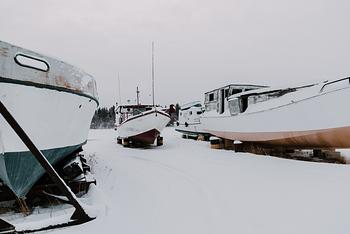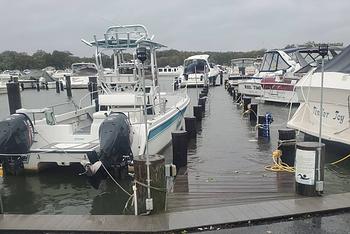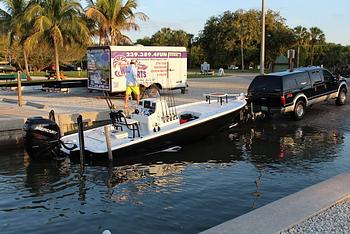It’s the equipment you never want to use, but having the proper safety gear on board could make all the difference when there is an emergency at sea. From cuts, scrapes and sunburn to more serious incidents such a man overboard or major medical emergencies, having the right equipment and knowing how to use it is vital. Here we take a look at some of the most important safety gear you should have on your boat;
Life Jackets

When it comes to the legalities of having life jackets on board, the regulations are different throughout the world. In the UK for example, it’s not mandatory to have life jackets on boats under 13.7 metres in length. But it is recommended, and you shouldn’t be leaving the dock without one for every person on your boat. In the US, however, children 13 years or younger are required to wear a U.S. Coast Guard-approved life jacket at all times while on a boat.
The idea of wearing a life jacket or personal flotation device (PFD) at all times can be off-putting. Yet it doesn’t need to be so, and on smaller motor yachts, RIBs, sail boats and fishing boats it’s a crucial safety consideration. Thankfully lifejackets have been streamlined from the bulky equipment we once knew. These days they are lightweight and compact devices which automatically inflate on contact with water.
Lifejackets for children tend to be designed with extra safety in mind, in the form of a crotch strap which stops the jacket from riding up. They will also include a handle for easily lifting a child out of the water and a padded head support to keep their head above water. Be sure to have the jacket fitted correctly, as sizes are usually by weight to ensure sufficient buoyancy and proper fit.
If your furry friend is going to go along for days on the water then a lifejacket will ensure they stay safe too. While most dogs can swim well, waves or cold can exhaust them quickly. Lifejackets designed for dogs are comfortable to wear and, like children’s jackets, have a handle to lift them out of the water.
Life Rafts
As one of the most costly pieces of safety equipment on a boat, life rafts need some consideration before purchasing. Yet ultimately, when the worst happens, having a safe platform on which to escape a sinking ship is invaluable. Which life raft you choose depends on your chosen cruising grounds, not the size of your yacht – if you’re no longer on it, the size of the yacht is of no consequence. The environment you’re in, and how far you are from safety, will be. Broadly speaking there are two types of life raft; coastal or nearshore life rafts for use within areas where a rescue is certain within 24 hours, and offshore or ocean life rafts for use in areas greater than 10 miles offshore or with cold or volatile weather.
Things to consider when choosing your life raft include the stability (how may water-ballast bags it has to keep it upright in adverse conditions), a canopy (to protect against rain and sun exposure), a boarding aid (for easier access from the water), size (based on the total number of passengers on board), and an inflatable floor (for insulation against the cold).
Kill Cords

The official name for this vital piece of safety equipment is ‘engine safety cut-out switch’, but kill cord is less of a mouthful. It’s an absolute must for those operating open motor boats, RIBs or sports boats where the risk of being thrown from the vessel is greater.
So what is a kill cord and why do you need one? A bright red, coiled lanyard with a quick-release fitting at one end is attached to a dedicated kill switch on the console, wrapped around the driver’s leg or wrist and clipped back onto itself. If for any reason, the driver of a boat becomes dislodged from the helm position, the kill cord will stop the engine. It would also allow someone else on board to stop the engine if the driver were to become incapacitated.
In response to the restrictions on moving freely about the boat whilst wearing a kill cord, wireless kill cords have emerged onto the market. The device consists of a hub mounted in your boat and a wearable fob which communicate wirelessly with each other. It will automatically activate shut down of the engine when the fob is submersed in a few centimetres of water or it travels out of range from the hub.
On Board Communications and Signalling Equipment
Being able to call for help if you need it is imperative. Your mobile phone may be enough, but you need to be certain you will have sufficient signal, especially if you’re heading further from shore or are in more remote areas. So what are your options?
Distress flares should be an essential piece of safety kit. They can be used not only to signal for help, but also to warn other boats about your position and avoid possible collisions. Red flares signal emergencies and are usually used at night, whilst orange flares, also emergency signals, are better for daytime use. White flares can be used to warn other vessels of your position.
An alternative to the traditional distress flare, LED flares are gaining popularity. Upon activation they can send a light signal which can be seen up to five miles away.
While having flares on board is highly recommended, these days they are a last resort. By installing a VHF radio on your boat, a distress call will be a faster and safer way to ensure the help you need reaches you. VHF radios, whether hand held or fixed, will also allow search and rescue authorities to locate you using Radio Direction Finding (RDF) equipment.
If you’re planning on leaving coastal waters, VHF radio and its line of sight frequencies won’t be sufficient. Satellite services, which use geo-stationary satellites for transmitting and receiving signals, will keep you in contact from anywhere on the planet.
Radar Reflectors
Out on the open sea, you want other ships to know you’re there long before they can see you with the naked eye. This is especially crucial at night or in poor visibility. Many larger boats rely on radar for navigation and to spot other vessels, so you want to make sure you show up clearly on their radar.
Smaller boats, especially those made from non-metallic materials, return a very weak echo to radar, so they are required to carry radar reflectors if practicable. In their simplest form, radar reflectors are metallic foil with blades placed at right angles to maximize the reflection of radar signals and increase visibility.
When it comes to buying a radar reflector, bigger is better, so install the largest one you can realistically fit on your boat. It should also be placed higher than all superstructures and at least four metres above the water if possible.
First Aid Kit

Creating a first aid kit for your boat will depend on many factors, including the type and size of boat, how many passengers are likely to be on board, and where you will be cruising. For short trips on inland waterways or coastal cruising where, in the case of an emergency you can get to shore quickly, a simple first aid kit is sufficient. Be sure to include sea sickness tablets, antihistamines, and sun protection along with standard painkillers, wound dressings and bandages.
At the other end of the spectrum, those embarking on offshore or ocean voyages [link to upcoming article on sailing around the world] will need a more comprehensive medical kit including medications, local anaesthetic, antibiotics, a pocket mask for resuscitation, oxygen and even, as is common on larger superyachts, a defibrillator.
Family Training Courses
Being prepared and aware of the dangers is the very best safety skills you can have. Family boat safety courses are a great way to make children aware of the risks and what they can do to help keep a day of boating a safe and fun experience. There is a whole host of training courses aimed at families with children from the age of eight. From inland waterways crew courses to sea survival training, day skipper certificates, powerboat licences, first aid courses and more. They provide children and young adults with increased responsibility and awareness which will all help to keep them safe at sea.



